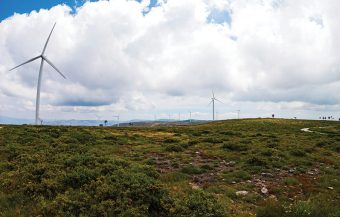
Green bonds are a relatively young financial instrument dating back just over 15 years. In 2007, the European Investment Bank (EIB) issued these securities for the first time. Green bonds are debt securities that can be issued by the state or private institutions, under the condition that the money collected in this way should be used towards financing projects that have a positive impact on the living environment and are re lated to the sustainable development goals (renewable energy, energy efficiency, traffic, sustainable management water and wastewater) or activities related to climate change.
Plus, the issuer is obligated to report to the public, and investors whether the funds thus collected are used in the manner stated in the prospectus.
We spoke with Zoran Grubišić, Dean and Professor at the Belgrade Banking Academy, about the first issued green bond in Serbia, the country’s laws that regulate green bonds and how these securities function in the Western Balkans.
In Focus:
- SOCIAL NETWORKS FROM A DIFFERENT ECO-ANGLE
- MT-KOMEX BH – REGIONAL ACTOR FOR SOLAR ENERGY
- ECOLOGY EMBASSY IN THE CULTURE STREET
Q: How long have these financial instruments taken root in the Western Balkans? Is there a legal framework in Serbia for issuing green sovereign bonds?
A: In 2020, together with the other Western Balkan countries, the Republic of Serbia signed the Green Agenda for the Western Balkans Declaration in Sofia. Soon after that, laws on climate change and renewable energy sources were passed. All this gave impetus to Serbia developing a framework document for issuing green bonds, which is in line with the principles related to green bonds published in June 2021 by the International Capital Markets Association (ICMA) and their four basic components: use of funds, cost evaluation and selection process, asset management and reporting.
In 2016, the Green Fund was established in Serbia as an institutional financial mechanism to implement environmental protection financing measures. The Green Fund is financed through donations and loans, the Serbian state budget allocations for this year and other public revenues. Serbia also received the 2021 Sovereign Green Market Pioneer Award given by the Climate Bonds Initiative. This award is significant because it classifies us as an environmentally responsible country.
Q: What is the importance of green bonds for investors, and what are the advantages for the state?

A: When green bonds are issued by the state or local authorities (muni cipalities), the tax treatment related to interest rate income (financial income generated by green bonds) is clear. All government securities are exempt from this tax, which makes them even more attractive from the investor’s point of view. Of course, another risk always considered in this situation is the currency risk, depending on whether the bonds are euro-indexed or classic dinar bonds, which carry such risk. Nevertheless, taking into account that the foreign currency exchange rate has been stable in the last ten years, as well as that Serbia still seems quite attractive in terms of capital influx from abroad, we can say that such a risk is acceptable in the medium term from the standpoint of investors who invest in dinar bonds. If we look at things from the state’s point of view, it is clear that our public debt is dominated by Eurobonds that do not carry such a risk, so it is to be expected that this would also be the case with this specific financial instrument.
Q: Can green bonds be attributed to investors’ environmental goals, i.e. that they obligate investors to invest in sustainable projects?
A: There are very important examples of acceptable costs in project financing for each of the so-called green categories: renewable energy, energy efficiency, transport, sustainable water and wastewater management, pollution control and prevention, the circular economy, environmental and biodiversity protection and sustainable agriculture. Altogether, it fits into the definition of the basic idea of green bonds, which is the question of sustainable development, a topic that is immensely popular today. Of course, all this is appropriately monitored through mandatory regular reporting.
Interviewed by Mirjana Vujadinović Tomevski
Read the whole story in the new issue of the Energy portal Magazine SUSTAINABLE ARCHITECTURE AND FINANCING OF GREEN CONSTRUCTION



